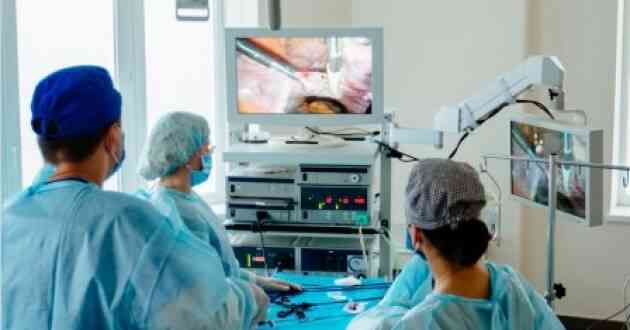Bimast- India's Premier Medical Training Institute

BIMAST is a premier training institute in India offering specialized medical training courses and fellowship program
BIMAST is a premier training institute in India offering specialized medical training courses and fellowship program to doctors in certain medical disciplines. - Top Laparoscopic Surgery in India
BIMAST Bhandari Institute of Minimal Access Surgery Training (BIMAST) is a fastest growing premier institute of surgical training which offers a variety of courses in Laparoscopy Surgery, Laparoscopic Gynecology Surgery, Endourology, Arthroscopy and Joint Replacement, ENT and Cardiology. BIMAST courses are approved by IAGES and FOGSI for Minimal Access Surgery training. The institute is dedicated to provide one on one training with ample of opportunities to learn from the pioneers in different medical fields. The HANDS-ON training program is a key feature of BIMAST. Trainees are accepted at the institution only if they have a valid medical license to practice in India.
Laparoscopic Surgery
Minimally invasive surgery, often known as surgery with a small incision, is known as laparoscopic surgery. A device known as a laparoscope, which includes a tiny video camera and light on the end, makes it possible. The abdominal cavity is initially inflated with carbon dioxide gas to provide a working and viewing space. Then, a 5mm incision is made to insert the telescope into the abdominal cavity. It allows a surgeon or medical professional to view a video monitor placed inside the abdominal cavity. Little incisions are used to insert additional working ports when doing surgery.
When non-invasive procedures fail to diagnose a disorder, laparoscopy is utilized for diagnostics. Surgery is carried out through small incisions, which speeds up postoperative patient recovery, lessens blood loss and pain, and dramatically improves cosmetics.
Diagnosis options are offered through laparoscopy for Pelvic inflammatory disease (PID), Endometriosis, Ectopic pregnancy, Ovarian cyst, Fibroids, Female infertility, Undescended testicles, Appendicitis, Unexplained abdominal pain, Liver cancer, Pancreatic cancer , Ovarian cancer, Bile duct cancer, Gallbladder cancer.
A common laparoscopic procedure performed by general surgeons around the world is the laparoscopic cholecystectomy (LC). Laparoscopic surgery planning incorporates a variety of variables, such as calculating the procedure’s difficulty or conversion risk in advance. The objective of our study was to assess several risk variables and use a scoring system to preoperatively gauge the complexity and extent of the procedure.
This prospective study was carried out by the department of surgery at BIMAST (Bhandari Hospital) in Jaipur, India. The variables included in the preoperative scoring technique included advanced age, male sex, hospitalization history, obesity, scars from earlier abdominal surgeries, palpable gall bladders, thick gall bladder walls, pericholecystic collections, and impacted stones. There were 210 patients total in the research.
We discovered that the likelihood of a difficult laparoscopic cholecystectomy was statistically significantly influenced by past hospitalization, palpable gall bladder, impacted stones, and gall bladder wall thickness. This preoperative scoring method’s sensitivity and specificity were determined to be 95.74% and 73.68%, respectively. For easy and challenging instances, respectively, this scoring technique had positive prediction values of 90% and 88%. The 0.86 area under the ROC curve. Laparoscopic to open cholecystectomy conversion rate was discovered to be 4.28%.
Conclusion
Accurate prediction can help high-risk patients learn in advance how likely they are to convert, giving them the opportunity to make plans accordingly. On the other hand, surgeons may also need to properly plan the operation’s time and personnel. The potential complications that can develop in high risk patients can also be known to surgeons.
Why Laparoscopy Surgery ?
A laparoscope (telescope) is inserted into the abdomen during laparoscopic surgery, and the instruments are subsequently inserted into the abdomen through tiny keyholes. They perform the entire procedure while gazing at a TV display. This most recent and high-tech type of surgery provides the patient with various benefits, including: –
· Minimal pain
· Minimal blood loss
· Early return to work (1-2 Days)
· No need for blood transfusion
· Less chances of infections
When everything is magnified 20 times by the laparoscope and the potent Infrared light source highlights the area to be operated on, laparoscopy is a considerably superior procedure to open surgery in that the illness inside the body can be removed completely.
For more info : – Best Laparoscopic Surgery in India

